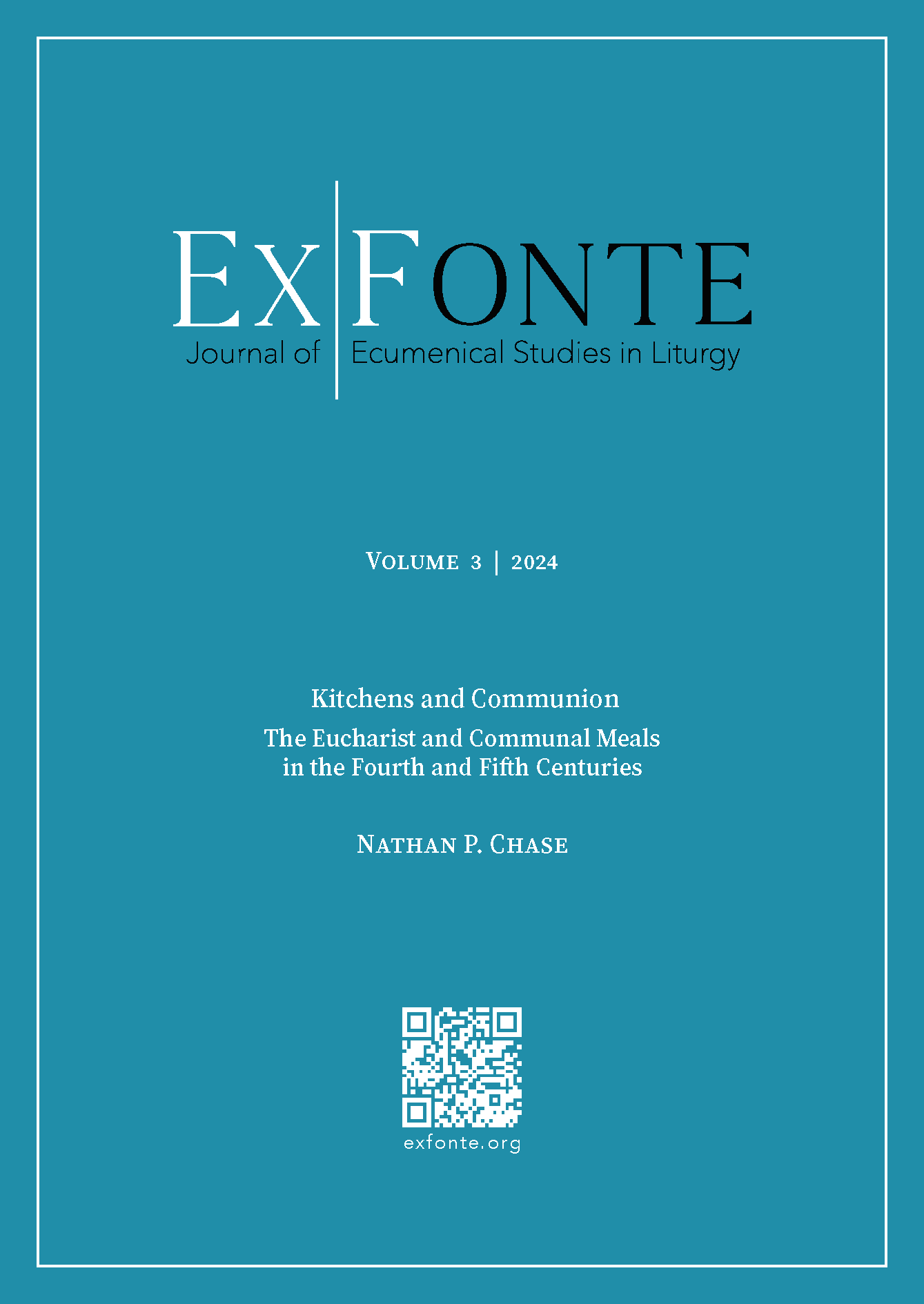Kitchens and Communion
The Eucharist and Communal Meals in the Fourth and Fifth Centuries
DOI:
https://doi.org/10.25365/exf-2024-3-7Keywords:
ʿAin el-Gedida, Kellis, Eucharist, Christian Meals, Liturgy, Refrigeria, Agape, Early ChristianAbstract
Early Christian Eucharists were meals that consisted not only of the token bits of bread and wine that we normally associate with the Christian Eucharist, but also other food stuffs like cheese, olives, milk, honey, etc. They were not just for ritual purposes but also for provisioning. By the end of the third century, the Eucharist appears to have shifted, in most places, from a meal to a token distribution of bread and wine. As a result, most scholars assume that the Eucharist stopped being celebrated in a meal context by the end of the third century, leading to the “normative” Eucharist of the fourth century. However, remnants of the once Eucharistic meal can be seen beyond the third and fourth centuries in: the archeological evidence; the church orders; legislative texts; and memorial and funerary customs known broadly as refrigeria. This article looks at this evidence to argue for a broader understanding of Eucharistic practice in the fourth and fifth centuries.

Downloads
Published
How to Cite
Issue
Section
License
Copyright (c) 2024 Nathan Chase

This work is licensed under a Creative Commons Attribution 4.0 International License.




